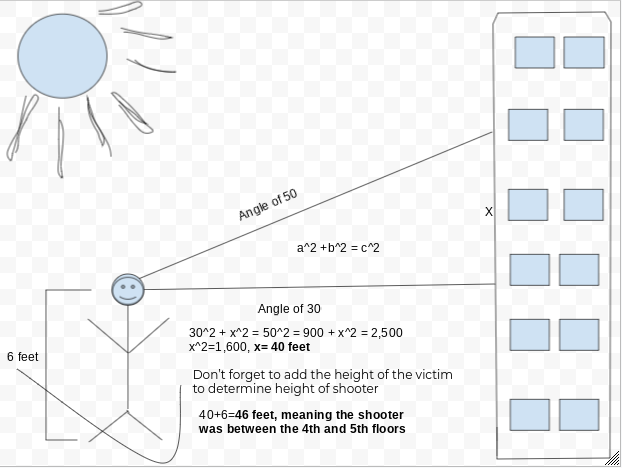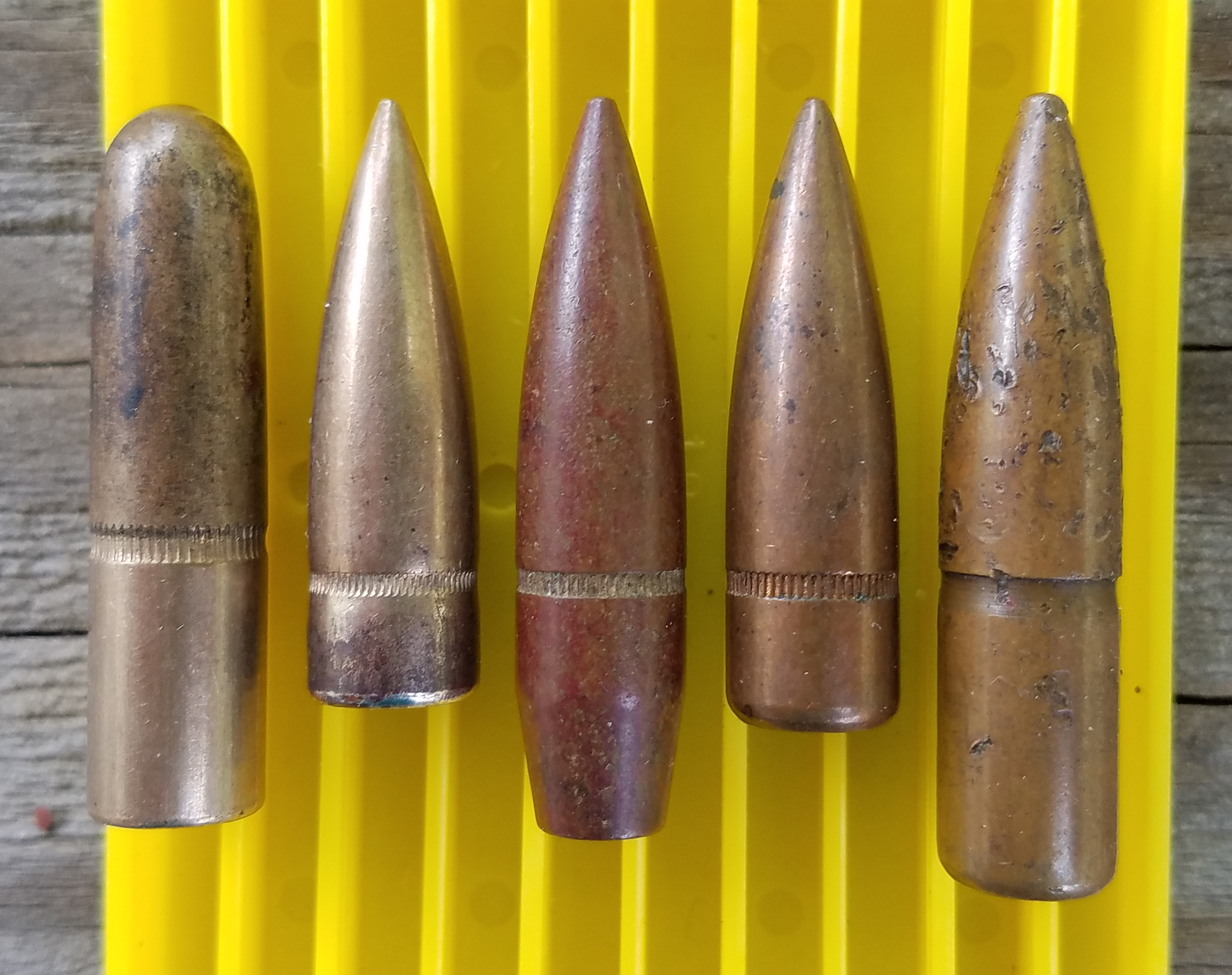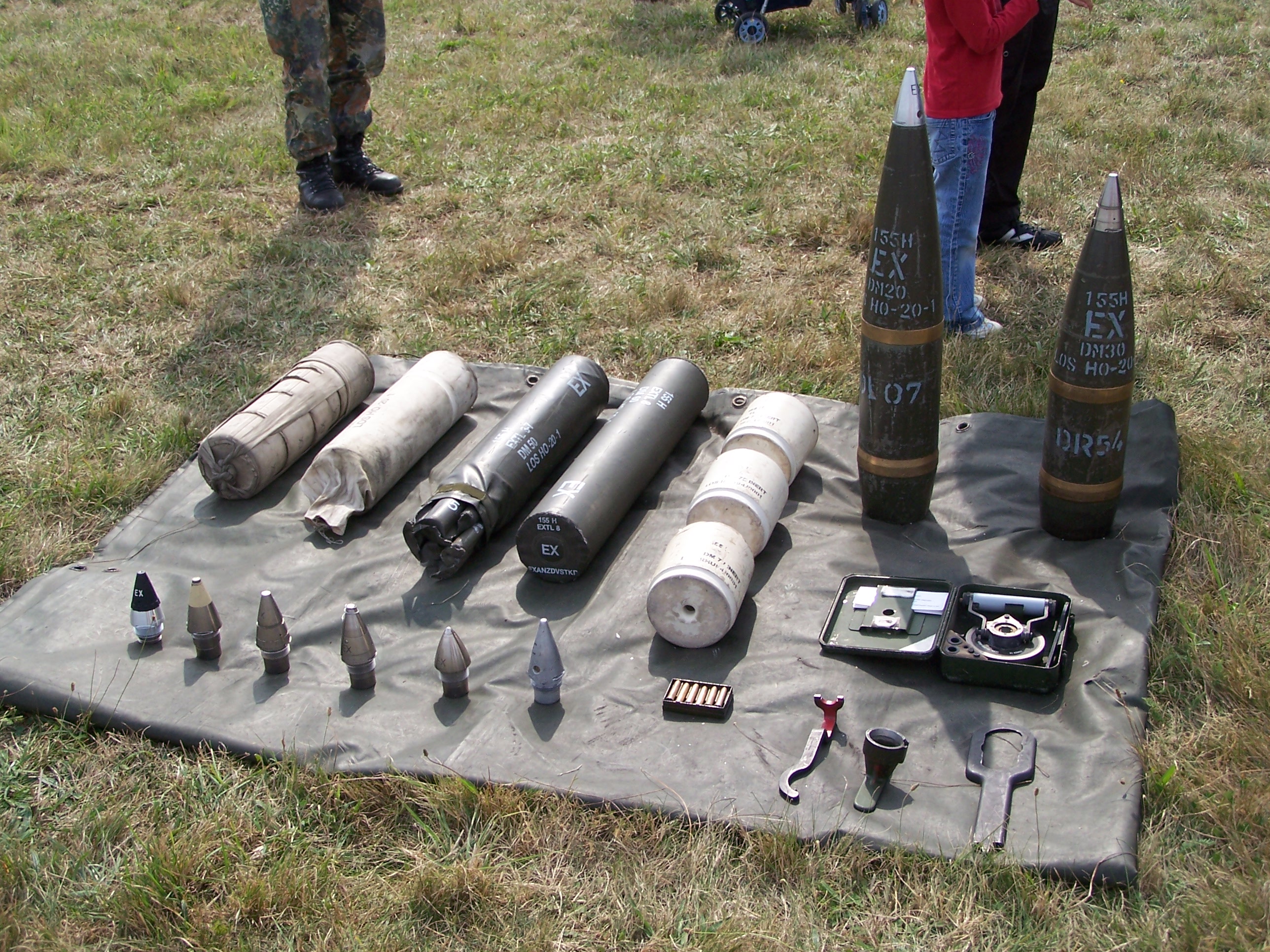|
Very-low-drag
A very-low-drag bullet (VLD) is primarily a small arms ballistics development of the 1980s–1990s, driven by the design objective of bullets with higher degrees of accuracy and kinetic efficiency, especially at extended ranges. To achieve this, the projectile must minimize air resistance in flight. Usage has been greatest from military snipers and long-range target shooters, including F-class and benchrest competitors, but hunters have also benefited. Most VLD bullets are used in rifles. VLD bullets typically have a ballistic coefficient greater than 0.5, although the threshold is undefined. Bullets with a lower drag coefficient decelerate less rapidly. A low drag coefficient flattens the projectile's trajectory and also markedly decreases the lateral drift caused by crosswinds. The higher velocity of bullets with low drag coefficients means they retain more kinetic energy. Development VLD bullets are long and heavy for their diameter, to achieve a high sectional density. ... [...More Info...] [...Related Items...] OR: [Wikipedia] [Google] [Baidu] |
External Ballistics
External ballistics or exterior ballistics is the part of ballistics that deals with the behavior of a projectile in flight. The projectile may be powered or un-powered, guided or unguided, spin or fin stabilized, flying through an atmosphere or in the vacuum of space, but most certainly flying under the influence of a gravitational field. Gun-launched projectiles may be unpowered, deriving all their velocity from the propellant's ignition until the projectile exits the gun barrel. However, exterior ballistics analysis also deals with the trajectories of rocket-assisted gun-launched projectiles and gun-launched rockets; and rockets that acquire all their trajectory velocity from the interior ballistics of their on-board propulsion system, either a rocket motor or air-breathing engine, both during their boost phase and after motor burnout. External ballistics is also concerned with the free-flight of other projectiles, such as balls, arrows etc. Forces acting on the projectile W ... [...More Info...] [...Related Items...] OR: [Wikipedia] [Google] [Baidu] |
Ballistic Coefficient
In ballistics, the ballistic coefficient (BC, ''C'') of a body is a measure of its ability to overcome air resistance in flight. It is inversely proportional to the negative acceleration: a high number indicates a low negative acceleration—the drag on the body is small in proportion to its mass. BC can be expressed with the units kilograms per square meter (kg/m2) or pounds per square inch (lb/in2) (where 1 lb/in2 corresponds to ). Formulas General :C_\text = \frac = \frac where: *''C''b,Physics, ballistic coefficient as used in physics and engineering *''m'', mass *''A'', cross-sectional area *''C''d, drag coefficient *\rho, density *\ell, characteristic body length Ballistics The formula for calculating the ballistic coefficient for small and large arms projectiles ''only'' is as follows: :C_\text = \frac where: *''C''b,Projectile, ballistic coefficient as used in point mass trajectory from the Siacci method (less than 20 degrees). *''m'', mass of bullet *''d'', mea ... [...More Info...] [...Related Items...] OR: [Wikipedia] [Google] [Baidu] |
Benchrest Shooting
Benchrest shooting is a shooting sport discipline in which high-precision rifles are rested on a table or bench — rather than being carried in the shooter's hands — while shooting at paper or steel targets, hence the name "benchrest". Both the forearm and buttstock A gunstock or often simply stock, the back portion of which is also known as a shoulder stock, a buttstock or simply a butt, is a part of a long gun that provides structural support, to which the barrel, action, and firing mechanism are attached ... of such a rifle are usually fully supported by bean bags, a bipod/monopod (front/rear) combination, and/or a specially designed fixture (tool), fixture device called shooting rest (which may be one- or two-piece depending on competition rules), so that the gun can remain stably pointing at the target without needing to be held by someone. When shooting, the shooter simply sits/stands comfortably behind the table/bench, operates the action (firearms), action and p ... [...More Info...] [...Related Items...] OR: [Wikipedia] [Google] [Baidu] |
Hollow Point
upright=0.2, Cross-section of a hollow-point bullet; proportions are those of a .22 Long Rifle cartridge Jacketed soft point (JSP) round. Right: Jacketed hollow-point (JHP) round. JSP is a semi-jacketed round as the jacket does not extend to the tip">soft point bullet">Jacketed soft point (JSP) round. Right: Jacketed hollow-point (JHP) round. JSP is a semi-jacketed round as the jacket does not extend to the tip Various hollow points: .45 Auto, .38 Special, .44 S&W Special">.38_Special.html" ;"title=".45 Auto, .38 Special">.45 Auto, .38 Special, .44 S&W Special, .44 Remington Magnum file:22-45.jpg, .45 ACP Federal HST 230gr hollow point cartridge, with two rounds of CCI Standard Velocity .22 Long Rifle, .22 LR for comparison purposes file:40SW.jpg, .40 S&W round, complete cartridge and expanded bullet file:Federal 9mm hollow point.jpg, A 9×19mm Parabellum, 9mm hollow point cartridge, along with unexpanded and expanded bullets. The expanded lead bullet and copper jacket are ... [...More Info...] [...Related Items...] OR: [Wikipedia] [Google] [Baidu] |
Gun Barrel
A gun barrel is a crucial part of gun-type weapons such as small firearms, artillery pieces, and air guns. It is the straight shooting tube, usually made of rigid high-strength metal, through which a contained rapid expansion of high-pressure gas(es) is used to propel a projectile out of the front end ( muzzle) at a high velocity. The hollow interior of the barrel is called the bore, and the diameter of the bore is called its caliber, usually measured in inches or millimetres. The first firearms were made at a time when metallurgy was not advanced enough to cast tubes capable of withstanding the explosive forces of early cannons, so the pipe (often built from staves of metal) needed to be braced periodically along its length for structural reinforcement, producing an appearance somewhat reminiscent of storage barrels being stacked together, hence the English name.''A History of Warfare'' - Keegan, John, Vintage 1993. History Gun barrels are usually metal. However, the e ... [...More Info...] [...Related Items...] OR: [Wikipedia] [Google] [Baidu] |
Drag (physics)
In fluid dynamics, drag (sometimes called air resistance, a type of friction, or fluid resistance, another type of friction or fluid friction) is a force acting opposite to the relative motion of any object moving with respect to a surrounding fluid. This can exist between two fluid layers (or surfaces) or between a fluid and a solid surface. Unlike other resistive forces, such as dry friction, which are nearly independent of velocity, the drag force depends on velocity. Drag force is proportional to the velocity for low-speed flow and the squared velocity for high speed flow, where the distinction between low and high speed is measured by the Reynolds number. Even though the ultimate cause of drag is viscous friction, turbulent drag is independent of viscosity. Drag forces always tend to decrease fluid velocity relative to the solid object in the fluid's path. Examples Examples of drag include the component of the net aerodynamic or hydrodynamic force acting opposite to the di ... [...More Info...] [...Related Items...] OR: [Wikipedia] [Google] [Baidu] |
Cartridge (firearms)
A cartridge or a round is a type of pre-assembled firearm ammunition packaging a projectile (bullet, shot, or slug), a propellant substance (usually either smokeless powder or black powder) and an ignition device (primer) within a metallic, paper, or plastic case that is precisely made to fit within the barrel chamber of a breechloading gun, for the practical purpose of convenient transportation and handling during shooting. Although in popular usage the term "bullet" is often informally used to refer to a complete cartridge, it is correctly used only to refer to the projectile. Cartridges can be categorized by the type of their primers – a small charge of an impact- or electric-sensitive chemical mixture that is located: at the center of the case head (centerfire); inside the rim ( rimfire); inside the walls on the fold of the case base that is shaped like a cup (cupfire, now obsolete); in a sideways projection that is shaped like a pin (pinfire, now obsolete); or a ... [...More Info...] [...Related Items...] OR: [Wikipedia] [Google] [Baidu] |
Quality Control
Quality control (QC) is a process by which entities review the quality of all factors involved in production. ISO 9000 defines quality control as "a part of quality management focused on fulfilling quality requirements". This approach places emphasis on three aspects (enshrined in standards such as ISO 9001): # Elements such as controls, job management, defined and well managed processes, performance and integrity criteria, and identification of records # Competence, such as knowledge, skills, experience, and qualifications # Soft elements, such as personnel, integrity, confidence, organizational culture, motivation, team spirit, and quality relationships. Inspection is a major component of quality control, where physical product is examined visually (or the end results of a service are analyzed). Product inspectors will be provided with lists and descriptions of unacceptable product defects such as cracks or surface blemishes for example. History and introduction Ea ... [...More Info...] [...Related Items...] OR: [Wikipedia] [Google] [Baidu] |
Franklin Ware Mann
Franklin Weston Mann (July 24, 1856 – November 14, 1916) was an American physician and inventor remembered as author of the pioneering ballistics text entitled ''The Bullet's Flight from Powder to Target: The Internal and External Ballistics of Small Arms; a Study of Rifle Shooting with the Personal Element Excluded, Disclosing the Cause of the Error at Target''.Sipe, Warren "Dr. Mann: Father of Ballistic Science" in ''Guns'' November 1960 pp. 28–30,58&60 Early life Mann was youngest of six children born in Norfolk, Massachusetts to Levi and Lydia (Ware) Mann. He grew up on a New England farm and started shooting at the age of twelve. He was intrigued by causes of dispersion of bullets fired at a single point of aim. He graduated from Cornell University with a Bachelor of Science degree in 1878 and from Boston University School of Medicine as a Doctor of Medicine. He worked four years as a general practitioner including obstetrics while running a shop where he sharpene ... [...More Info...] [...Related Items...] OR: [Wikipedia] [Google] [Baidu] |
Shell (projectile)
A shell, in a military context, is a projectile whose payload contains an explosive, incendiary, or other chemical filling. Originally it was called a bombshell, but "shell" has come to be unambiguous in a military context. Modern usage sometimes includes large solid kinetic projectiles that is properly termed shot. Solid shot may contain a pyrotechnic compound if a tracer or spotting charge is used. All explosive- and incendiary-filled projectiles, particularly for mortars, were originally called ''grenades'', derived from the French word for pomegranate, so called because of the similarity of shape and that the multi-seeded fruit resembles the powder-filled, fragmentizing bomb. Words cognate with ''grenade'' are still used for an artillery or mortar projectile in some European languages. Shells are usually large-caliber projectiles fired by artillery, armored fighting vehicles (e.g. tanks, assault guns, and mortar carriers), warships, and autocannons. The shape ... [...More Info...] [...Related Items...] OR: [Wikipedia] [Google] [Baidu] |
Driving Band
Russian 122 mm shrapnel shell, which has been fired, showing rifling marks on the copper driving band around its base and the steel bourrelet nearer the front A driving band or rotating band is a band of soft metal near the base of an artillery shell, often made of gilding metal, copper, or lead. When the shell is fired, the pressure of the propellant swages the metal into the rifling of the barrel and forms a seal; this seal prevents the gases from blowing past the shell, and engages the barrel's rifling to spin-stabilize the shell. Purpose The rotating band has three essential functions: * Center the rear end of the projectile in the gun barrel. * Seal the bore to prevent burning powder gas from moving through the rifling grooves past the projectile. * Engage with the rifling of the barrel to spin the projectile and stabilize its flight. Characteristics The shell is stabilized for yaw in the barrel by a smaller bourrelet band near the front of the projectile. This band ... [...More Info...] [...Related Items...] OR: [Wikipedia] [Google] [Baidu] |
Artillery
Artillery is a class of heavy military ranged weapons that launch munitions far beyond the range and power of infantry firearms. Early artillery development focused on the ability to breach defensive walls and fortifications during sieges, and led to heavy, fairly immobile siege engines. As technology improved, lighter, more mobile field artillery cannons developed for battlefield use. This development continues today; modern self-propelled artillery vehicles are highly mobile weapons of great versatility generally providing the largest share of an army's total firepower. Originally, the word "artillery" referred to any group of soldiers primarily armed with some form of manufactured weapon or armor. Since the introduction of gunpowder and cannon, "artillery" has largely meant cannons, and in contemporary usage, usually refers to shell-firing guns, howitzers, and mortars (collectively called ''barrel artillery'', ''cannon artillery'', ''gun artillery'', or - a layman t ... [...More Info...] [...Related Items...] OR: [Wikipedia] [Google] [Baidu] |







